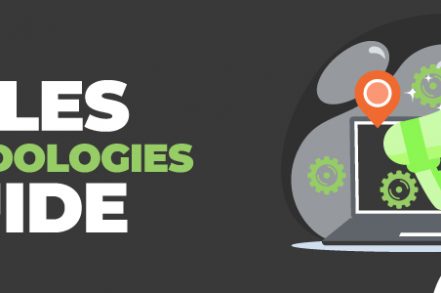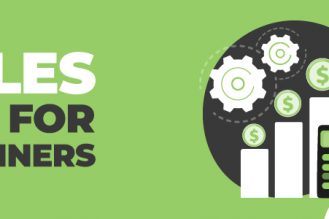You need a sales process that works for you and your customers to succeed. There are many sales methods, and it can be hard to choose the right one for you. We’ll be discussing the pros and cons of sales methodologies in this article.
Sales methodologies are a systematic way to sell your products or services to customers. It is based on the belief that people will buy more if they are confident. It describes how to approach potential clients and what you should tell them.
A system is essential for sales teams to know how to approach clients. You’ll have better chances of closing deals if more reps use the same style and messaging.
It’s not about being right or wrong. It all depends on what your market is and how you do business.
If you have a few standardized, low-cost products, your representatives will need to be transactional to help clients choose the best option. It’s time to move on if they don’t know enough about your products or are looking for an outsourcing solution.
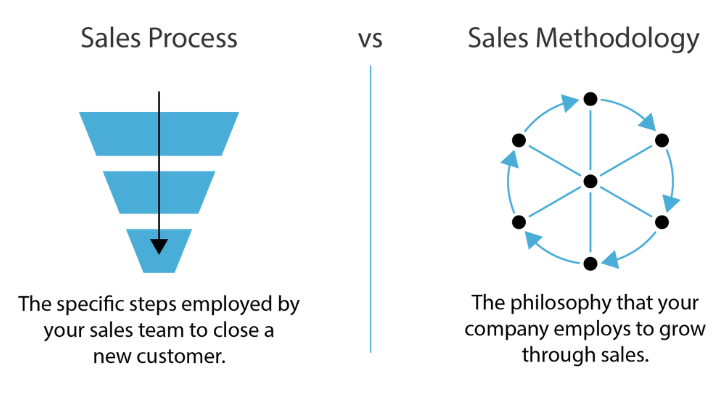
Difference between sales methods and sales processes?
To increase your sales performance, you need both a sales process and a sales methodology. You can achieve success by combining the two.
You must have a sales process in place if you want to sell. This is because there are seven stages to this particular model: prospecting and contacting, meeting with decision-makers, and then presenting your product/service at its best.
A methodology is a systematic way to solve any problem.
It is important to understand how you want your sales process run. Are you looking for a consistent strategy for each phase of the sales process? Or do you want different strategies depending on the stage of the sale?
Sales Methodologies: Why are they important?
A sales methodology is the foundation of a successful sales process. You can still close a sale, but without a sales methodology, there won’t be consistency or efficiency among your team members and a lack of success overall.
There are many benefits to sales methods, such as:
- Strategies to assess and steer sales prospects and overcome challenges
- To increase sales performance, tools and best-selling strategies are available.
- Scalable processes
- Consistency across sales organizations
Simply put, companies that create a sales culture and combine their strategic approach with it will get more deals (or larger).
Selecting the Right Sales Method
You should have a specific sales methodology that matches your product when it comes to selling. If the customer doesn’t feel comfortable with the product being sold, or if there is any mismatch between the rep and the customer, nothing will work.
It’s reasonable to use consultative sales efforts for six months if you market a product that sells for $100,000 per year. If they only require your services once a month or every few weeks, it’s logical to apply consultative sales effort for six months. It might be a better idea to send them another person.
Although you cannot expect to make a $1M sale if you spend only $5, it doesn’t mean all business-to-business sales methods are equal. If you want to succeed, there is more investment required in certain cases.
Although there are many sales approaches to be used, there are only five main ones for B2B sales.
1. DIY Self-Service: Some companies can grow by letting customers do the work, rather than relying heavily on sales reps.
2. Transactional selling: Some customers are more motivated to buy products they have researched. These people are often limited by time and want to get the best deal.
3. Solution selling: Some customers already know the problems they are having with the products and services offered by the various sales organizations. They need assistance in resolving specific issues so they can continue to purchase from them for days or even weeks.
4. Consultative selling: Sales representatives will need to spend time understanding the customer’s needs and then recommend the best solution. This process can take anywhere between 6-18 months.
5. Provocative Selling is a method of B2B sales that challenges clients to take action. It can be applied with innovative solutions and takes approximately 3 to 9 months.
The 6 Top Sales Methodologies
Here’s what you need to know:
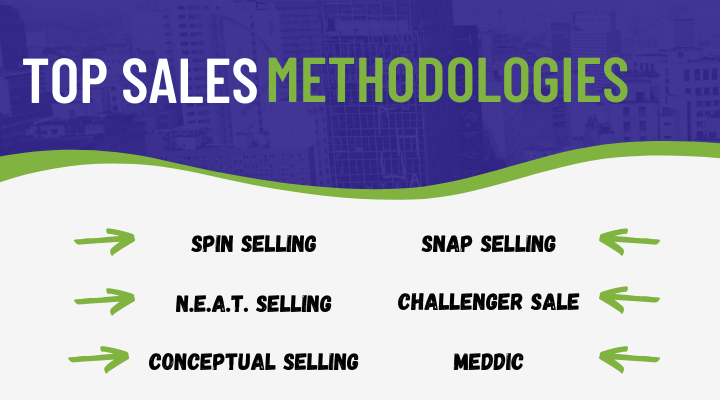
1. The Challenger Sale
There are five types of personality that sales reps can choose from. The Challenger is the first, who is happy to challenge existing norms and set new records.
- Relationship builders
- Hard workers
- Lone wolves
- Reactive problem solvers
- Challengers
Gartner found that the most successful sellers in B2B enterprise markets are those who are challenger-type. These challenger reps can understand what customers want and how they can get it from them. This is based on their research into client behavior, which was facilitated by access to online information.
Prospects spend more time looking at products and consulting peers than they do talking to you. This means that your prospect is already 57% through the buying process by the time he or she contacts you.
The traditional sales approach is not the same. It states that customers should be invited into your world by sharing information about their work environment with them, and not trying to get them to join yours.
Next, tailor your communications to each prospect’s needs and guide them in a particular direction.
A challenger sales model is one of the best ways to sell in this setting. Sales leaders need to be able to provide high-quality information and answer questions about why customers should purchase your product or services.
Additional Reading: The Ultimate Guide to Sales Targeting
2. Conceptual Selling
Although this method of selling has been around for some time, it’s difficult to find sales representatives who practice it. The seller is trying to sell a concept or idea, rather than just one product. This can be more difficult and requires listening skills.
Asking questions and listening actively is the best way for sellers to make a sale. This technique aims to discover what your customer’s end state is to help them find solutions.
It is important to ask five types of questions to your employees to get the best out of them.
- Confirmation questions are used to verify that you understand the information.
- To clarify the prospect’s perception of the product/service, we will ask for new information.
- Attitude questions are designed to help you understand a prospect on a personal level.
- Questions about commitment ask prospects about their investment in the undertaking that they are working on.
- Basic questions to understand potential problems.
Conceptual selling is a win for both the client as well as the sales reps.
Concept selling can be a powerful tool in a world where brands are increasingly important. You need to understand how this process is integrated into your business model, given the increasing importance of reputation and repeat customers.
3. MEDDIC
Parametric Technology Corporation’s sales team created the MEDDIC method in the 1990s. It emphasizes greater measurement and tighter control over your funnel to determine if it is worthwhile spending time with a potential buyer.
It stands for:
- Metrics: What is the prospect’s most important goal in working with your company?
- Economic Buyer: Get to know the decision-maker at the company you are negotiating with. This is usually different from the person the rep will meet.
- Decision Criteria: Learn what factors the prospect used in arriving at a decision and how those criteria were weighted.
- Decision Process: Understand how decisions are made, who decides, what sign-offs are required, and what timelines are involved.
- Identify your pain points: What problems does your product solve? What happens if they don’t use your product?
- Champion: It is crucial to find a champion in your target company that wants you to succeed. This person will be most affected by the company’s problems and will be the greatest benefactor of your offering.
MEDDIC is a sales methodology that focuses on where you should put your effort and time when you’re out in the field. This method takes into consideration how much work it will require to succeed, which is especially helpful for companies with multiple targets or multiple opportunities.
4. N.E.A.T. Selling
NEAT selling is more than a way to sell. It’s about qualifying leads and determining where your reps should spend their time to ensure they’re selling to people who will buy the product.
NEAT stands for:
- Need: The prospect requires a solution to their problem. They are in pain and require help.
- Economic Impact: The financial impact of the prospect’s pain can be substantial. They will be able to improve productivity and efficiency by finding a solution.
- Access to Authority: Who are the key decision-makers? How can sales reps get in touch with them?
- Timeline: What is the realistic timeline to complete the deal? When does the client need the product to be live?
This methodology was developed in collaboration between Sales Hacker Inc. and Harris Consulting Group. It was created to flip BANT upside down.
The BANT system can be used to help reps understand the customer’s needs but not how to fulfill them.
It’s not only important for the customer, but also for you to close more deals. NEAT selling allows you to close more deals by qualifying prospects based upon their needs and how much assistance they require from your company, rather than following the purchase qualification process.
5. SNAP Sales
Jill Konrath’s SNAP sales model was published for the first time in 2012. Customers can be overwhelmed by the time they spend speaking with agents. Therefore, reps must be efficient in presenting the information.
KISS stands for Key Information Sharing System. It is based on the belief that reps should be able to provide vital information to customers. This assumes that prospective buyers are busy and distracted so it will be easier to speed up the sales process.
These are the four principles:
- Simple: If you are selling to busy people, sophistication will be a problem. Therefore, it is important to present only the most basic information.
- It is important to be a trusted specialist for buyers.
- Aligned: Make sure you are aligned with your customer and their needs.
- Priority: Keep the most important decisions at the forefront of their minds.
The SNAP process is a simple one-step process that simplifies customer experience and produces sales results. It is for people who are tired, distracted, or need something to rely upon.
6. SPIN Selling
SPIN is an older model that has been around since 1988. Neil Rackham developed it. It focuses on diagnosing the problem of the customer before trying to sell them anything.
SPIN is the best way to quickly gather information and understand the needs of prospects. It stands for four types: Situation, Problem Implication, Need-payoff, and Implication.
- Situation: What is the current situation for the prospect of your solution? Are you able to understand the buyer’s current approach and resources?
- Problem: How is the situation causing the pain? What is the problem?
- Implication: What are your consequences? What happens to the prospect if the situation isn’t resolved? What causes them more pain?
- Need-Payoff: What does it look like when the problem is solved? It can lead to increased efficiency and productivity for many businesses.
These questions help sales reps understand their customers’ real problems, and convince them that they need help solving them. Always follow up with the customer to find out what would happen if they decline your offer.
SPIN is a powerful sales method, but reps are meeting customers before they have had the chance to do research. SPIN could be less effective because of this.
Methodology for Customer-Centric Sales
It turns out that you cannot just give someone a paycheck and expect them not to do the work. Sales reps must have meaningful conversations with prospects to help them succeed. They need to identify their needs and find solutions.
Eight principles are the cornerstone of customer-centric behavior. These principles, when applied consistently in customer interactions with customers, are key to building a relationship.
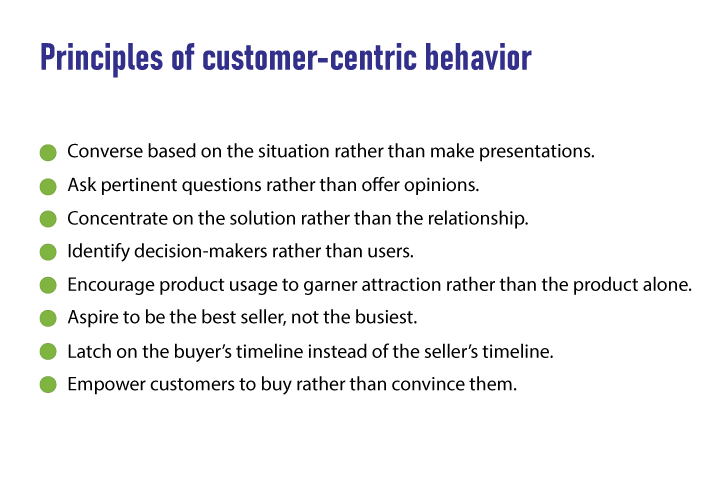
1. Instead of making presentations, converse based on the situation.
Customer-centricity means being sensitive to the needs of customers and empathizing with them. It involves knowing what to say to make them feel heard.
The same boring presentation may not work for everyone. It is important to be able to communicate with your customer and adapt to their needs based upon what they are experiencing.
2. Ask questions and not just give your opinions.
Customer-centric selling is all about empathy. Customers should feel that you are listening to them, that they are your best friend, as well as that their opinions matter.
If you dominate the conversation by dominating it with your thoughts about what’s going on without asking others about their views, you’re not engaging in customer-centric sales.
3. Focus on the solution and not the relationship.
Customer-centric selling is not about you. Your priority should be solving the problem and offering a solution. This will lead to solid relationships. These relationships cannot be built if it is “first come, first served.”
4. Identify decision-makers, not users.
Customer-centric selling is about the customer. It’s not about what you have to sell, but how your product can solve their problems. Instead of telling them why they should purchase it, show them how your product can solve their problems in a real-life setting.
This type of selling is for people who can influence vendor selections and release unbudgeted money, rather than users who are more concerned about features and functions.
5. Encourage product usage rather than just the product to attract customers.
This fact is related to the one above.
Customer-centric selling is not about focusing on features and functions. It’s about how your product will make the prospect’s life easier. Instead of making them assume they know what you are talking about, show them how it will solve their problems.
6. Be the best seller, not just the busiest.
Quality over quantity. It’s not just a way to sell customer-centric, it’s the only way.
7. Instead of the seller’s timeline, latch on the buyer’s timeline.
It can be difficult to understand the feelings and needs of customers. It’s your job, as sales reps, to figure out what their needs are. If you don’t do it, chances are they will move on to something else.
Your customer is responsible for their schedule. It is up to the customer when they want the project finished. Don’t be too strict about meeting deadlines if it doesn’t work out for you both.
8. Customers should be empowered to buy, not convince.
You might think it’s a customer-focused company that ensures you get the best value for your money. This is not true. They are empowered consumers and have access to all these services and products.
You are not selling a product; you are solving a problem. Your primary goal should be to show how your product fits into their solution. Don’t talk about all the wonderful things it does. They should be sold what they care about and want.
Track emails, email reminders & templates in Gmail for free
Upgrade Gmail with the features it’s missing
Add to GmailDavid Campbell
David Campbell is the editor of the Right Inbox blog. He is passionate about email productivity and getting more done in less time.
